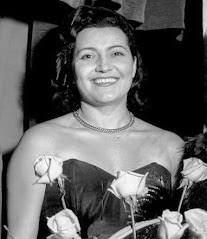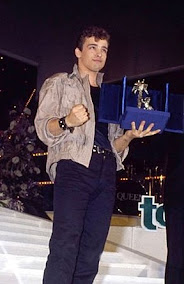Raimondo D’Inzeo – Olympic showjumper
First athlete to compete in eight consecutive Games
Raimondo D'Inzeo, who with his older brother Piero became the first athlete to compete in eight consecutive Olympic Games, was born on this day in 1925 in Poggio Mirteto, a small town in Lazio about 45km (28 miles) northeast of Rome. They achieved the record when they saddled up for the show jumping events in Montreal in 1976, surpassing the previous record of seven consecutive summer Games held by the Danish fencer Ivan Osiier, whose run, which began in 1908 and was interrupted twice by World Wars, had stood since 1948. The D’Inzeo brothers, whose Olympic journey began in London in 1948 just as Osiier’s was ending, had chalked off seven Olympics in a row at Munich in 1972, when each won the last of their six medals in the team event. Raimondo had carried the Italian flag at the opening ceremony. Their finest moment came at the 1960 Olympics in their own country, when they were roared on by a patriotic crowd at the Villa Borghese Gardens in Rome to complete a one-two in the individual event, Raimondo taking the gold medal on his horse Posillipo, Piero the silver on The Rock. Read more…
_____________________________________
Vittorino da Feltre – humanist and educator
Teacher to the nobility provided free education for poor children
A scholar considered to have been the greatest humanist schoolmaster of the Renaissance, Vittorino da Feltre, died on this day in 1446 in Mantua in the Lombardy region. Da Feltre, who was originally named Vittore dei Ramboldini when he was born in Feltre in the republic of Venice in 1378, is thought to have established the first boarding school in Europe, a place of learning where the pupils enjoyed their lessons so much that it became known as La Casa Gioiosa - The House of Joy. After studying and then teaching at the University of Padua, Da Feltre chose to settle in Padua and became a successful teacher, welcoming pupils into his own home, varying his fee according to the financial situation of the pupil’s family. He himself had come from a noble family that had become impoverished and his own early education had been difficult, but this had contributed to making him a strong and decisive character. He had also benefited from free tuition at the University of Padua. In 1423, he was asked to become tutor to the children of the powerful Gonzaga family, who ruled over Mantua. He agreed to do this providing he could set up his own school away from the Gonzaga court and its political influence. Read more…
______________________________________
Antonio Maria Valsalva – anatomist
Work by brilliant professor benefits astronauts today
Antonio Maria Valsalva, a much respected anatomist, died on this day in 1723 in Bologna. Valsalva’s research focused on the anatomy of the ear and his discoveries were so important that a piece of equipment used by astronauts today is named after him. The Valsalva device in spacesuits allows astronauts to equalise the pressure in their ears by performing the Valsalva manoeuvre inside the suit without using their hands to block their nose. It has also been used for other purposes, such as to remove moisture from the face. Valsalva was born in Imola in 1666. He received an education in humanities, mathematics and natural sciences before going on to study medicine and philosophy at Bologna University. He later became Professor of Anatomy at Bologna University. His main interest was the middle and inner ear and it was Valsalva who coined the term Eustachian tube for a part within the ear. It was named after the 16th century anatomist Bartolomeo Eustachi. The Valsalva manoeuvre, the forcible exhalation against a closed airway, often practised by people to equalise pressure between the ears when on an aeroplane, is still used by doctors today to help them with diagnosis in certain situations. Read more…
________________________________________
Giovanni Pierluigi da Palestrina - composer
Prolific writer had huge influence on the development of religious music
The composer Giovanni Pierluigi da Palestrina, who was the most famous representative of the 16th century Roman school of musical composition and whose work is often described as the culmination of Renaissance polyphony, died on this day in 1594 in Rome. Probably in his 70th year when he died, he had composed hundreds of pieces, including 104 masses, more than 300 motets, at least 72 hymns and some 140 or more madrigals. He served twice as maestro di cappella - musical director - of the Cappella Giulia (Julian Chapel), the choir at St. Peter's Basilica in Rome, a highly prestigious if not well paid position. Appointed for the first time in 1551, he might have stayed there for the rest of his working life had a new pope, Paul IV, not introduced much stricter discipline compared with his predecessor, Julius III. A decree set down by Paul IV in 1555 forbade married men to serve in the papal choir, as a result of which Palestrina and two colleagues were dismissed. Palestrina subsequently directed the choir at the Basilica of San Giovanni in Laterano for five years before quitting abruptly in frustration at the limited ability of his singers, compared with St Peter’s. Read more…
_____________________________________
Antonio Segni - prime minister and president
Sardinian politician famous for tactical cunning
Antonio Segni, the first Sardinian to become Italy's prime minister, was born on this day in 1891 in Sassari, the second largest city on the island. Sassari was also the hometown of another Italian prime minister, Francesco Cossiga, and of the country's most successful Communist leader, Enrico Berlinguer. Like Segni, Cossiga also served the country as president. Born into a landowning family and a prominent member of the Christian Democratic party from the time of its formation towards the end of the Second World War, Segni was prime minister from 1955 to 1957 and from 1959 to 1960. He was president from 1962 until he was forced to retire due to ill health in 1964. Frail in appearance for much of his life, Segni was a strong politician nonetheless, given the affectionate nickname Il malato di ferro - the invalid with the iron constitution - by his supporters. He was also highly astute, particularly when it came to wrong-footing opponents. Segni became politically active in his late 20s, joining the Italian People's Party (PPI) - predecessor of the Christian Democrats - in 1919 and by 1924 was a member of the party's national council. Read more…
______________________________________
Book of the Day: Rome 1960: The Summer Olympics That Stirred the World, by David Maraniss
From the New York Times bestselling author of Clemente and When Pride Still Mattered, here is the blockbuster story of the 1960 Summer Olympics in Rome, 17 days that helped define the modern world. Legendary athletes and stirring events are interwoven into a suspenseful narrative of sports and politics at the Rome games, where cold-war propaganda and spies, drugs and sex, money and television, civil rights and the rise of women superstars all converged to forever change the essence of the Olympics. Using the meticulous research and sweeping narrative style that has become the Maraniss trademark, Rome 1960 reveals the rich palette of character, competition, and meaning that gave Rome 1960 its singular essence.David Maraniss is a New York Times best-selling author, fellow of the Society of American Historians, and visiting distinguished professor at Vanderbilt University. He has been affiliated with the Washington Post for more than 40 years as an editor and writer, and twice won Pulitzer Prizes at the newspaper. In 1993 he received the Pulitzer Prize for National Reporting for his coverage of Bill Clinton, and in 2007 he was part of a team that won a Pulitzer for coverage of the Virginia Tech shooting. He was also a Pulitzer finalist three other times, including for one of his books, They Marched into Sunlight, a book about Vietnam and the 1960s.
.jpg)
.jpg)


.jpg)

.jpg)





.jpg)










